| Hamden Fire Retirees Association, Inc. |
 |
| CLICK here for daily flag status |
|
|
FRIDAY, NOVEMBER 20, 2015
Website is updated every Friday - Important interim updates will be posted when necessary
|
 |
| CLICK to monitor HFD radio |
|
|
__________________________________________________________________________________________________________
|
65 Years Ago
Sunday, November 26, 1950
HURRICANE!
|
On Sunday, November 26, 1950, a hurricane with winds of 70 m.p.h. hit southern Connecticut. In an article published on the front page of the November 30th edition of The Hamden Chronicle, Fire Marshal Albert Purce opined that this hurricane "was far more destructive than the fabled 1938 hurricane." Indeed, for Hamden it was. The majority of damage to Hamden in 1938 was in the form of about 400 fallen trees. The 1950 hurricane damage was far more severe. The photographs published in that edition of the Chronicle convey the magnitude of destruction that affected some Hamden areas.
The practice of naming hurricanes began in 1954, the year Hurricane Carol hit southern Connectricut. The last significant hurricane to hit Hamden was Hurricane Gloria in 1985.
Originally posted 9/3/10
CLICK ON NEWSPAPER IMAGE TO ENLARGE
|
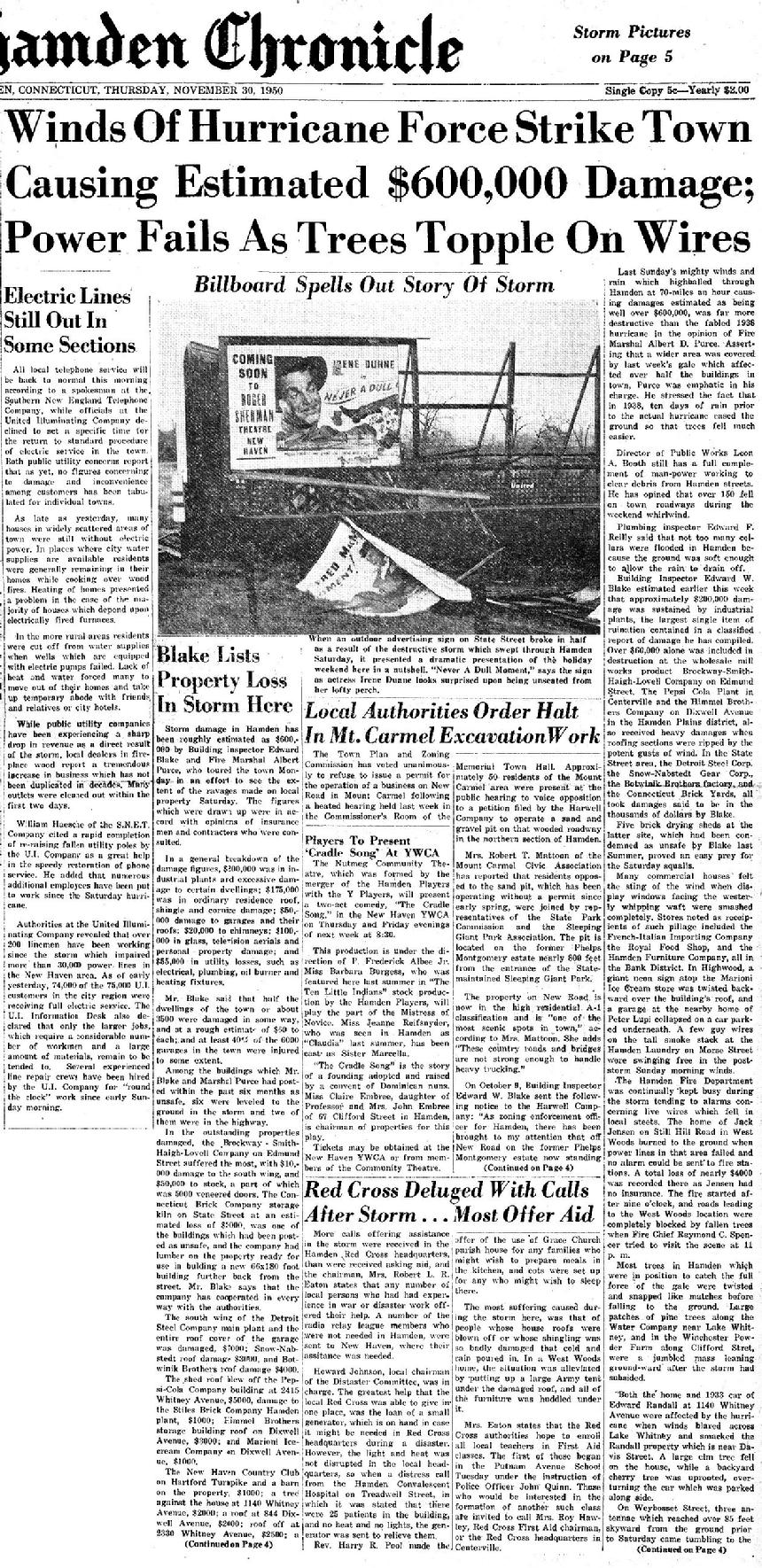 |
| CLICK to enlarge - Courtesy of the Hamden Historical Society |
|
|
Click on any aftermath photo below to enlarge the image.
|
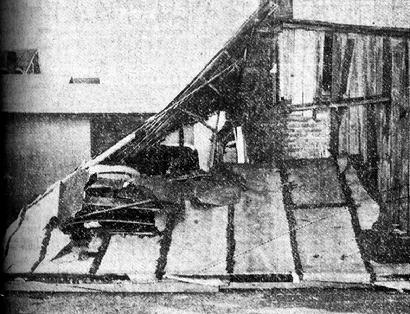 |
| Garage at 844 Dixwell collapsed on auto |
|
|
 |
| 2416 State Street |
|
|
 |
| These five drying shacks were destroyed at the Connecticut Brick Co. on State Street. |
|
|
 |
| 1140 Whitney Avenue, just north of Hamden Hall |
|
|
 |
| 2804 Whitney Avenue (Today the parking lot for Whitney Manor) |
|
|
 |
| 2330 Whitney Avenue (A two-story commercial building is located there now) |
|
|
 |
| 2341 Whitney Avenue (torn down in 1983) |
|
|
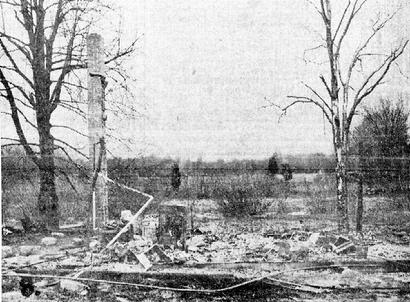 |
| The Jensen home on Still Hill Road burned to the ground because downed wires delayed alerting the fire department. In addition, all routes leading to the scene were all blocked by fallen trees. |
|
|
__________________________________________________________________________________________________________
|
New Kitchen for Station 5!
Old Walls Became Accidental Time Capsule
The building, built and paid for by the Mt. Carmel Volunteer Fire Co., opened in 1926. Career personnel have been stationed there ever since. But it wasn't until the late 1970s that one of the upstairs bedrooms at Station 5 was converted into a real kitchen. Now, after nearly four decades, it was clearly time for a new kitchen, also paid for by the volunteer company.
Some relics of historical interest were revealed during demolition of the old kitchen/bedroom walls two weeks ago. First, was the discovery of many old newspapers dating from 1935 to 1937 tucked away within the exterior walls, presumably an attempt at insulation. Second, was the discovery of a doorway, long since covered up, that once connected the kitchen area (when it was a bedroom) with the adjacent bedroom, which was expanded into a much lareger bunkroom when the kitchen was built in the late 1970s.
|
 |
| The finished product! |
|
|
The old kitchen was transformed into this new facility between Friday, November 6th, when "tear-down" commenced, until the job was completed earlier this past week. Below are examples of a few of the ancient newspapers that were discovered within the exterior walls. (Wanna buy a new Chevy for about $700?)
|
 |
| CLICK ON THE IMAGE TO ENLARGE |
|
|
Old newspapers were discovered crammed between the exterior studs of the kitchen. A small alcove to the left of the window, hidden for years, was probably a closet for "paid men" stationed at Mt. Carmel in its earliest days. This photo was taken during demolition of the old kitchen on Saturday, November 7th, two days before new drywall was installed. The entire project was completed by early this past week.
|
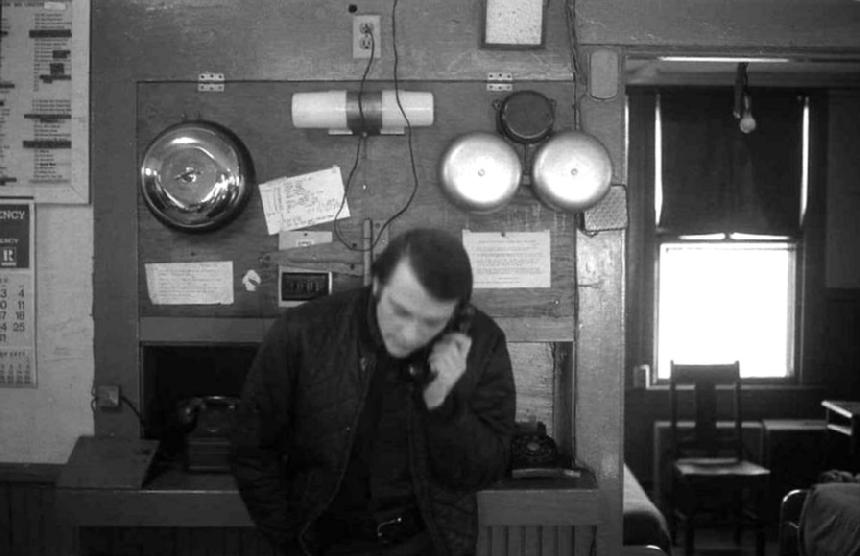 |
| The wall opening to the left of George allowed the firefighter in the lefthand bedroom to reach out to answer the house phone at night. |
|
|
This 1978 photo of Firefighter George Edwards talking on the PBX phone to the Alarm Room, was taken just before the inner bedroom (background - right) was converted into the kitchen. To the left of that room was another bedroom of about the same size. The opening in the wall behind George allowed the firefighter in the outermost bedroom to reach out to answer the house phone at night.
When the station was a two-man house, each firefighter had his own room. Once Truck 1 was transferred to Station 5 in 1976, two firefighters occupied each bedroom. Two bunks can be seen in the bedroom behind George.
The obvious need for a kitchen and more room for additional bunks for personnel resulted in the late '70s conversion of the inner bedroom into a kitchen and the expansion of the outermost bedroom into a four-bunk facility. Today, the south wall of the bunkroon is right about where George is standing.
|
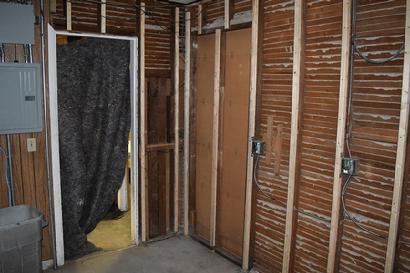 |
| Old doorway revealed during wall demolition |
|
The alarm bells on the wall and the red "house phone" on the shelf behind George were moved to the south wall of the "new" bunkroom. The old 3-slot pay telephone that was mounted on the wall to the left of the calendar (just out of view), was removed and a regular residential rotary dial telephone was installed.
An old doorway to the adjacent bedroom area can been seen to the right of the kitchen door. This doorway was long gone by the 1950s. It was probably removed during the late 1930s when the newspaper "insulation" was crammed in the bays between the studs of the exterior walls.
Also discovered inside the walls were two modest storage areas that may have provided a minimum of closet space for the early personnel.
When the station opened in January 1926, Al Purce was the driver. He was succeeded by Everett Doherty. They both worked a 168 hour workweek. Time off for early paid firefighters was courtesy of call men, or "substitutes," who were qualified to take their places when they wanted a day off now and then.
The workweek was cut to 84 hours in the 1930s and remained so until 1948, when it was cut again to 67.5 hours. In December 1950, firefighters achieved a 56-hour workweek that lasted until October 1970 when the current 42-hour workweek was adopted.
|
__________________________________________________________________________________________________________
|
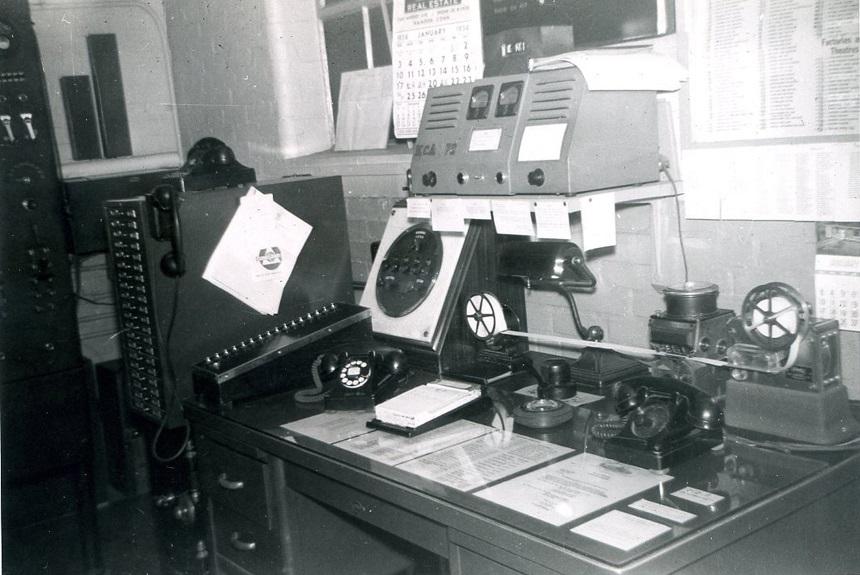 |
| January 1954 view of the Alarm Room at Station 4 (Photo by Chan Brainard) |
|
|
__________________________________________________________________________________________________________
|
Spark Time
The sixth of seven images from the mid-1960s Maxim fire apparatus catalog is a "closed-cab" cab-forward pumper. This is a slightly different model than the one featured in the October 23rd update.
|
__________________________________________________________________________________________________________
|
Honorary Member Caroline Ferraro
We regret to report the passing on November 20, 2015 of Hamden Fire Retirees Association honorary member Caroline (Carol) Ferraro, 92, widow of our brother Hamden firefighter, the late Salvatore "Cookie" Ferraro (1915-2009).
Carol's funeral was held Tuesday, November 24th, at 9:45 a.m. from the Peter H. Torello & Son Funeral Home, 1022 Dixwell Avenue, Hamden, and at Blessed Sacrament Church (Circular & Church) at 10:30. Interment in All Saints Cemetery.
Memorial contributions in her name may be sent to St. Jude's Children's Hospital, P.O. Box 1000, Memphis, TN 38101.
Our thoughts and prayers are with Carol's family.
Revised 11/26/15
|
__________________________________________________________________________________________________________
|
|